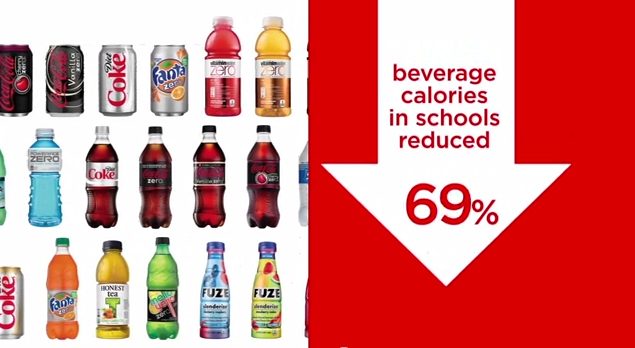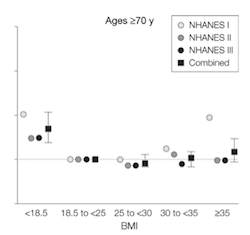For my monthly (first Sunday) Food Matters column in the San Francisco Chronicle, I devote the one in January every year to predictions. Last year I got them all pretty much on target. It didn’t take much genius to figure out that election-year politics would bring things to a standstill. This year’s column was much harder to do, not least because the FDA was releasing blocked initiatives right up to the printing deadline.
Q: I just looked at your 2012 crystal ball column. Your predictions were spot on. But what about 2013? Any possibility for good news in food politics?
A: Food issues are invariably controversial and anyone could see that nothing would get done about them during an election year. With the election over, the big question is whether and when the stalled actions will be released.
The Food and Drug Administration has already unblocked one pending decision. In December, it released the draft environmental assessment on genetically modified salmon – dated May 4, 2012. Here comes my first prediction:
The FDA will approve production of genetically modified salmon: Because these salmon are raised in Canada and Panama with safeguards against escape, the FDA finds they have no environmental impact on the United States. The decision is now open for public comment. Unless responses force the FDA to seek further delays, expect to see genetically modified salmon in production by the end of the year.
Pressures to label genetically modified foods will increase: If approval of the genetically modified salmon does nothing else, it will intensify efforts to push states and the FDA to require GM labeling.
Whatever Congress does with the farm bill will reflect no fundamental change in policy: Unwilling to stand up to Southern farm lobbies, Congress extended the worst parts of the 2008 farm bill until September. Don’t count on this Congress to do what’s most needed in 2013: restructure agricultural policy to promote health and sustainability.
The FDA will start the formal rule-making process for more effective food safety regulations: President Obama signed the Food Safety Modernization Act in January 2011. Two years later, despite the FDA’s best efforts, its regulations – held up by the White House – have just been released for public comment. Lives are at stake on this one.
The FDA will issue rules for menu labels: The Affordable Care Act of 2010 required calorie information to be posted by fast-food and chain restaurants and vending machines. The FDA’s draft applied to foods served by movie theaters, lunch wagons, bowling alleys, trains and airlines, but lobbying led the FDA to propose rules that no longer covered those venues. Will its final rules at least apply to movie theaters? Fingers crossed.
The U.S. Department of Agriculture will delay issuing nutrition standards for competitive foods: When the USDA issued nutrition standards for school meals in January 2012, the rules elicited unexpected levels of opposition. Congress intervened and forced the tomato sauce on pizza to count as a vegetable serving. The USDA, reeling, agreed to give schools greater flexibility. Still to come are nutrition standards for snacks and sodas sold in competition with school meals. Unhappy prediction: an uproar from food companies defending their “right” to sell junk foods to kids in schools and more congressional micromanagement.
The FDA will delay revising food labels: Late in 2009, the FDA began research on the understanding of food labels and listed more relevant labels as a goal in its strategic plan for 2012-16. Although the Institute of Medicine produced two reports on how to deal with front-of-package labeling and advised the FDA to allow only four items – calories, saturated and trans fat, sodium and sugars – in such labels, food companies jumped the gun. They started using Facts Up Front labels that include “good” nutrients as well as “bad.”
Will the FDA insist on labels that actually help consumers make better choices? Will it require added sugars to be listed, define “natural” or clarify rules for whole-grain claims? I’m not holding my breath.
Supplemental Nutrition Assistance Program participation will increase, but so will pressure to cut benefits: Demands on Snap – food stamps – reached record levels in 2012 and show no sign of decline. Antihunger advocates will be working hard to retain the program’s benefits, while antiobesity advocates work to transform the benefits to promote purchases of healthier foods. My dream: The groups will join forces to do both.
Sugar-sweetened beverages will continue to be the flash point for efforts to counter childhood obesity: The defeat of soda tax initiatives in Richmond and El Monte (Los Angeles County) will inspire other communities to try their own versions of soda tax and size-cap initiatives. As research increasingly links sugary drinks to poor diets and health, soda companies will find it difficult to oppose such initiatives.
Grassroots efforts will have greater impact: Because so little progress can be expected from government these days, I’m predicting bigger and noisier grassroots efforts to create systems of food production and consumption that are healthier for people and the planet. Much work needs to be done. This is the year to do it.
And a personal note: In 2013, I’m looking forward to publication of the 10th anniversary edition of “Food Politics” and, in September, my new editorial cartoon book with Rodale Press: “Eat, Drink, Vote: An Illustrated Guide to Food Politics.”







